June 30, 2023
Prelims Pointers
June 30, 2023
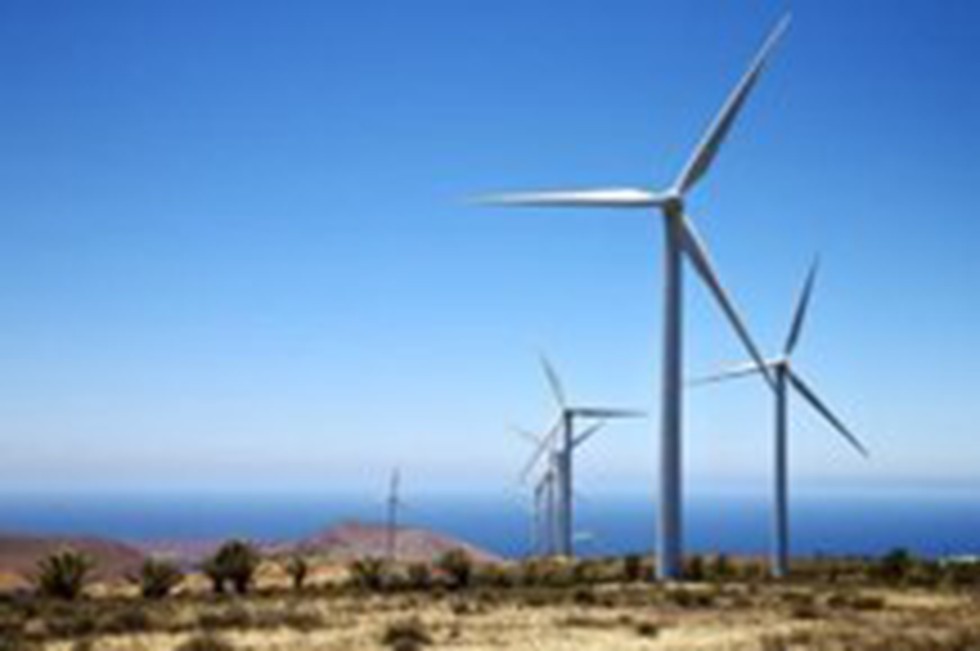
About Just Energy Transition Partnership (JET-P):
- It is a mechanism for multilateral financing by developed countries to support an energy transition in developing countries.
- It aims to reduce emissions in the energy sector and accelerate the coal phase-out.
- Transition describes the gradual movement towards lower carbon technologies, while ‘Just’ qualifies that this transition will not negatively impact society, jobs and livelihoods.
- It was launched at the COP26 in Glasgowwith the support of the United Kingdom (UK), the United States (US), France, Germany, and the European Union (EU).
- Senegal has become the fourth country after South Africa, Indonesia and Vietnam to sign the JET-P deal, with the International Partners Group comprising France, Germany, the European Union, the United Kingdom and Canada.
- India refused to give its consent, saying that coal cannot be singled out as a polluting fuel and that energy transition talks need to take place on equal terms.
Prelims Pointers
June 30, 2023
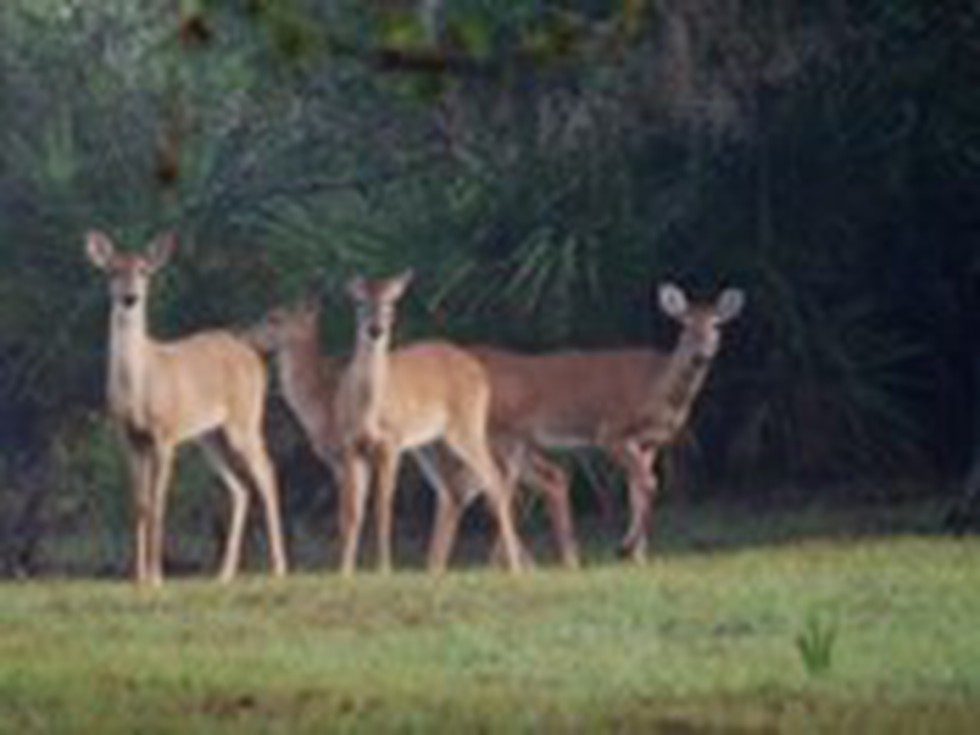
About the Hastinapur Wildlife Sanctuary:
- It is located in the state of Uttar Pradesh.
- It lies alongside the northern tip of the River Ganga, flowing thru the districts of Muzaffarnagar and Bijnor.
- It has a variety of landforms and is a mixture of different habitats such as wetlands, marshes, dry sand beds and gently sloping ravines.
- Fauna: Swamp Deer, Leopard, Wild Cats, Wild Otter, Pythons etc.
- Under Crocodile Breeding Projects, baby crocodiles are released in the Ganga River near Hastinapur.
- Under the aegis of the World-Wide Fund (WWF), the Turtle Rehabilitation Program also has its centre near the Hastinapur Sanctuary.
- It is a part of the "Asia Flyway" project, and many migratory Birds, both local and foreign, flock in numbers near the numerous water bodies present in the region.
Key Facts about Greater racket-tailed drongo
- It is a medium-sized Asian bird which is distinctive in having elongated outer tail feathers with webbing restricted to the tips.
- They are diurnal but are active well before dawn and late at dusk.
- They make a wide range of loud calls that include perfect imitations of many other birds.
- Distribution in India: The distribution range extends from the western Himalayas to the eastern Himalayas and Mishmi Hills and is also found in the hills of peninsular India and the Western Ghats
- Conservation status:
- IUCN: Least Concern
Prelims Pointers
June 30, 2023
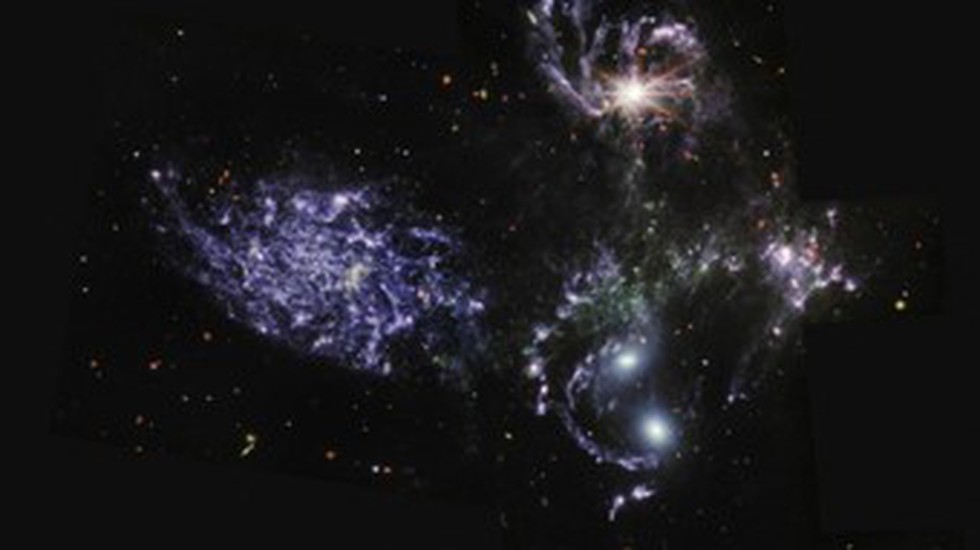
About Euclid Space Telescope:
- It is named after the Greek mathematician Euclid of Alexandria.
- This mission is part of ESA’s Cosmic Vision programme, which plans to explore the origin and components of the Universe and the fundamental laws that govern it.
- The spacecraft will have a 1.2-metre-wide telescope and two instruments;
- A visible-wavelength camera (the VISible instrument): It will look for tiny distortions in the shapes of distant galaxies from different points in time to highlight the tussle between the pull of gravity and the push of dark energy.
- A near-infrared camera/spectrometer(the Near-Infrared Spectrometer and Photometer): It will look at how quickly the galaxies are moving away from each other, which will offer scientists insight into both dark energy and the working of gravity.
- The detectors of the near-infrared instruments have been supplied by NASA, making the American agency an important part of the Euclid Consortium.
- It will be floating 1.5 million kilometres above the Earth, and the telescope hopes to deliver images that are at least four times sharper than ground-based ones.
- The spacecraft measures approximately 4.7 metres tall and 3.7 metres in diameter.
- It will be launched on a SpaceX Falcon 9 rocket and will remain operational for a minimum of six years.
Prelims Pointers
June 30, 2023

Key findings of the report:
- Oceans, along with absorbing carbon dioxide and moderating the climate, also cool the planet by releasing short-lived halogens such as chlorine, bromine and iodine.
- The short-lived halogens from the ocean reduce warming by depleting ozone.
- They increase methane’s lifetime in the atmosphere by destroying hydroxyl radicals (OH).
- They have increased the global methane burden by 14 per cent and 9 per cent for pre-industrial and present-day conditions.
- Halogens increase the levels of water vapour, a greenhouse gas in the atmosphere.
- The emission of halogen from the ocean is not the same across the world.
- Over continents, the emissions are small, while it is bigger in polar regions and some places with higher ozone levels.
Key facts about Halogens:
- The term Halogen in Greek means salt-producing because it reacts with many metals to produce salts.
- They are a group of elements located in Group 17 of the periodic table, which includes fluorine (F), chlorine (Cl), bromine (Br), iodine (I), and astatine (At).
- In 1826, Swedish chemist Jons Berzelius coined the term halogen for the entire group of elements.
- Unlike metals, they exist in all three different states of matter in their standard state.
- For example, fluorine is found naturally as a gas, bromine as a liquid, and the larger iodine is found naturally as a solid.
- Reactivity: Halogens are the most reactive nonmetals on the periodic table and are powerful oxidising agents.
Prelims Pointers
June 30, 2023

About Aspartame:
- It is the world's most commonly used low-calorie artificial sweetener, which is approximately 200 times sweeter than sucrose (common sugar)
- It was discovered by James M. Schlatter, a chemist, in 1965 and was introduced to replace sucrose.
- The U.S. Food and Drug Administration (FDA) approved aspartame for use in some dry foods in 1981 and for carbonated beverages in 1983.
- It is made up of two amino acids: aspartic acid and phenylalanine, which are naturally occurring amino acids in many protein-rich foods.
- In the body, aspartame is metabolised into its constituent components, aspartic acid, phenylalanine, and a small amount of methanol.-
- It is used worldwide as a sugar substitute in thousands of foods and drinks, including cereals, sugar-free chewing gum, low-calorie fruit juices and diet sodas.
- Around 100 countries around the world, including India, permit the use of aspartame.
Prelims Pointers
June 30, 2023
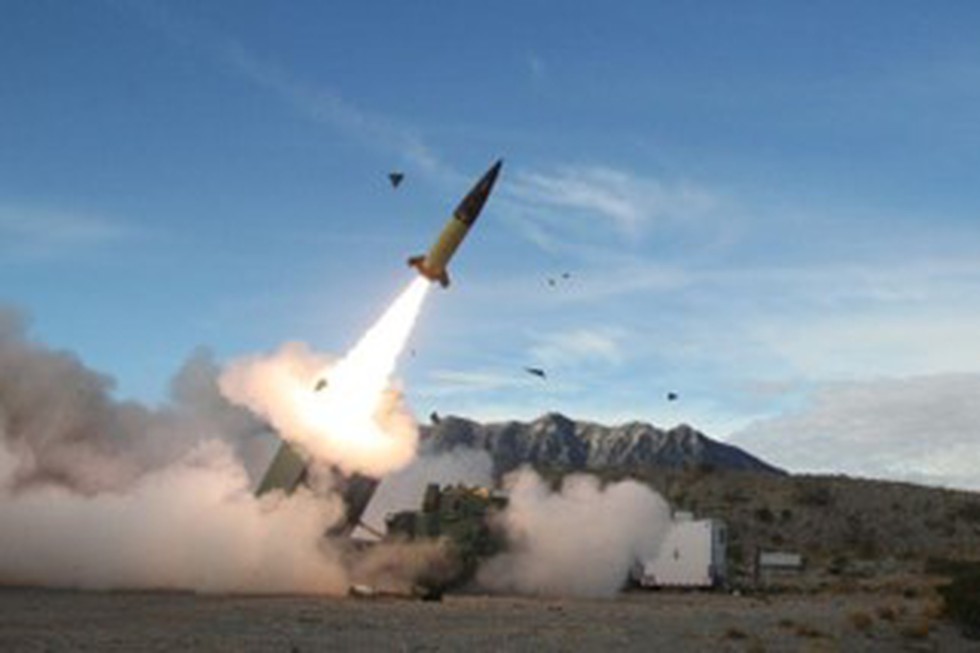
About Army Tactical Missile System (ATACMS):
- ATACMS is a conventional surface-to-surface artillery weapon system capable of striking targets well beyond the range of existing Army cannons, rockets and other missiles.
- It is manufactured by the US defence company Lockheed Martin.
- It is also designated M39 by the US Army, and its Dept of Defence (DoD) designation is MGM-140.
- This weapon's known operators other than the US are Bahrain, Greece, South Korea, Taiwan, and the United Arab Emirates.
- Features:
- ATACMS are 24/7, all-weather, surface-to-surface, inertially guided missiles.
- It has a range of about 190 miles (305 km).
- Propulsion: Single-stage, solid propellant.
- It is typically deployed from modified Multiple Launch Rocket System (MLRS) launch vehicles.
- Targets include air defence artillery sites, surface-to-surface missile units, logistics sites, command and control complexes, and helicopter forward operating bases.
Prelims Pointers
June 30, 2023
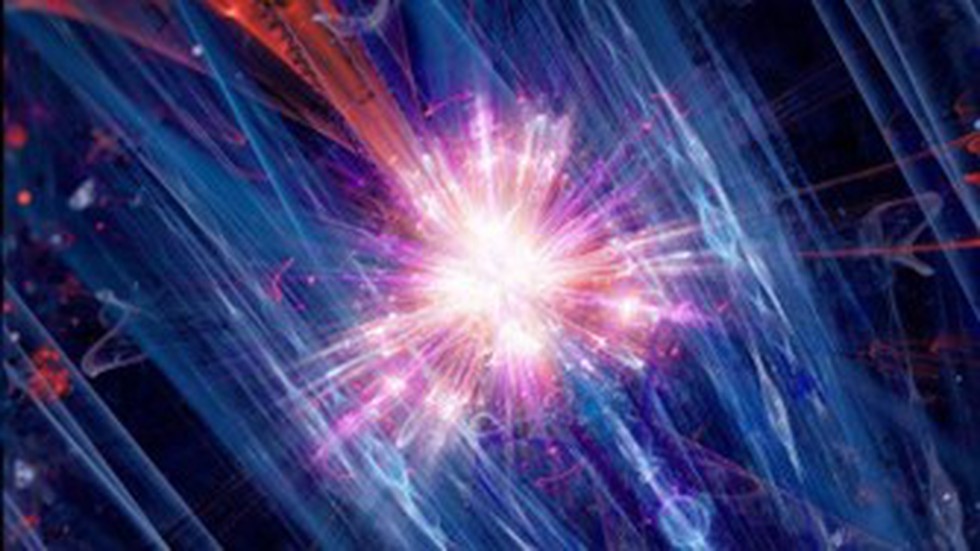
About Ghost Particles:
- Neutrinos are tiny subatomic particles, often called 'ghost particles' because they barely interact with anything else.
- Source: Neutrinos come from all kinds of different sources and are often the product of heavy particles turning into lighter ones, a process called “decay.”
- Neutrinos are denoted by the Greek symbol ν, or nu (pronounced “new”).
- They belong to the family of particles known as leptons. There are three main leptons, namely electrons, muons and tau particles, and each one has an associated neutrino and anti-neutrino.
- A neutrino is very similar to an electron but has no electrical charge and a very small mass.
- They are the most common particle in the universe. Approximately 100 trillion neutrinos pass completely harmlessly through the human body every second.
- They are extraordinarily difficult to detect, as they rarely collide with atoms.
- Of the four fundamental forces in the universe, neutrinos only interact with two — gravity and the weak force.
- But not all neutrinos are the same. They come in different types and can be thought of in terms of flavours, masses, and energies.
What is Antiparticle?
- In quantum theory, every type of particle is associated with an antiparticle with the same mass but with opposite physical charges. For example, the antiparticle of the electron is the positron.
Prelims Pointers
June 30, 2023
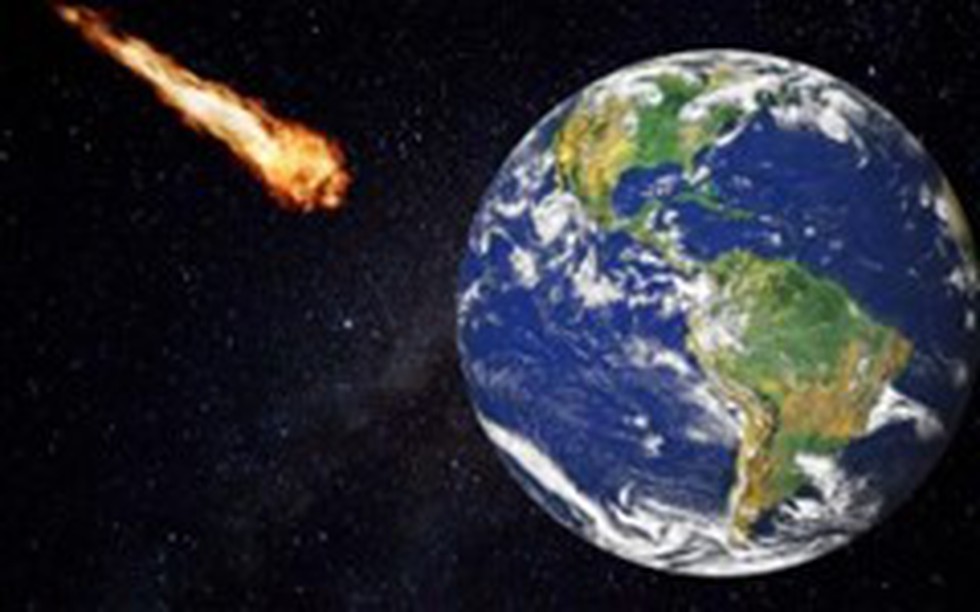
About World Asteroid Day:
- It is observed on June 30 every year.
- The day aims to raise awareness about asteroid impact hazards and crisis communication actions in case of a credible asteroid threat to planet Earth.
- The day also aims to educate people about the latest and upcoming asteroid research and technology through numerous events and activities held by organisations across the globe.
- History:
- The United Nations General Assembly (UNGA) passed a resolution in December 2016, designating June 30 as International Asteroid Day.
- The UNGA adopted the resolution based on the proposal made by the Association of Space Explorers, endorsed by the Committee on the Peaceful Uses of Outer Space (COPUOS).
- The date was chosen to commemorate the anniversary of the Tunguska asteroid’s impact over Siberia on June 30, 1908.
Tunguska Event:
- It is considered the biggest asteroid impact in recorded history when an asteroid exploded a few kilometres above the Tunguska region of central Siberia.
- It flattened more than 80 million trees in seconds, over an area spanning nearly 800 square miles (2,000 square kilometres) — but left no crater.
What is an Asteroid?
- Asteroids are small, rocky objects that orbit the sun.
- Although asteroids orbit the sun like planets, they are much smaller than planets.
- They are leftovers from the formation of our solar system.
- From being as small as 10 meters across to as huge as 530 km in diameter, asteroids have varied sizes.
Prelims Pointers
June 30, 2023
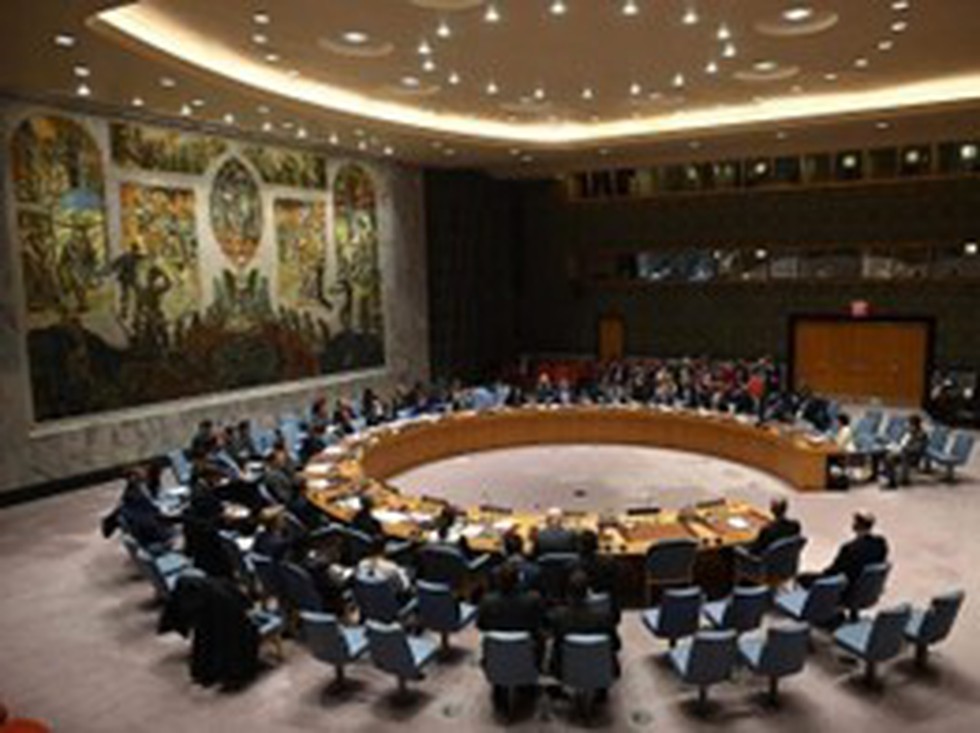
About Intergovernmental Negotiations Framework (IGN):
- IGN is a group of nation-states working within the UN to further reform the United Nations Security Council (UNSC).
- Composition: The IGN is composed of several different international organisations, namely:
- The African Union;
- The G4 nations (India, along with Brazil, Japan and Germany are pressing for a permanent seat in the reformed UNSC);
- The Uniting for Consensus Group (UfC), also known as the "Coffee Club";
- The L.69 Group of Developing Countries;
- The Arab League; and
- The Caribbean Community (CARICOM).
- Each group represents a different set of positions vis-a-vis reforming the UNSC.
- The group's conversations are considered "informal" in nature due to the lack of single text, and thus, UNGA rules of procedure don't apply.
- But in 2015, a framework document was agreed when it comes to the reform, which can be the basis for future talks.
What is the United Nations Security Council (UNSC)?
- The United Nations Charter established six main organs of the United Nations, including the UN Security Council (UNSC).
- UNSC has the primary responsibility for the maintenance of international peace and security.
- Under the UN Charter, all Member States are obligated to comply with Council decisions.
- The Security Council has a permanent residence at the United Nations Headquarters in New York City.
- Powers:
- Establishment of peacekeeping operations.
- Establishment of international sanctions.
- Authorisation of military action through Security Council resolutions.
- Members:
- The U.N. Charter provides for 15 members of the UNSC:
- Five permanent members are known as P5, including the United Kingdom, China, France, Russia and the US. They have veto power over decisions of the UNSC.
- 10 non-permanent members. Each year the 193-member General Assembly elects five non-permanent members for a two-year term at the UNSC.
Prelims Pointers
June 30, 2023
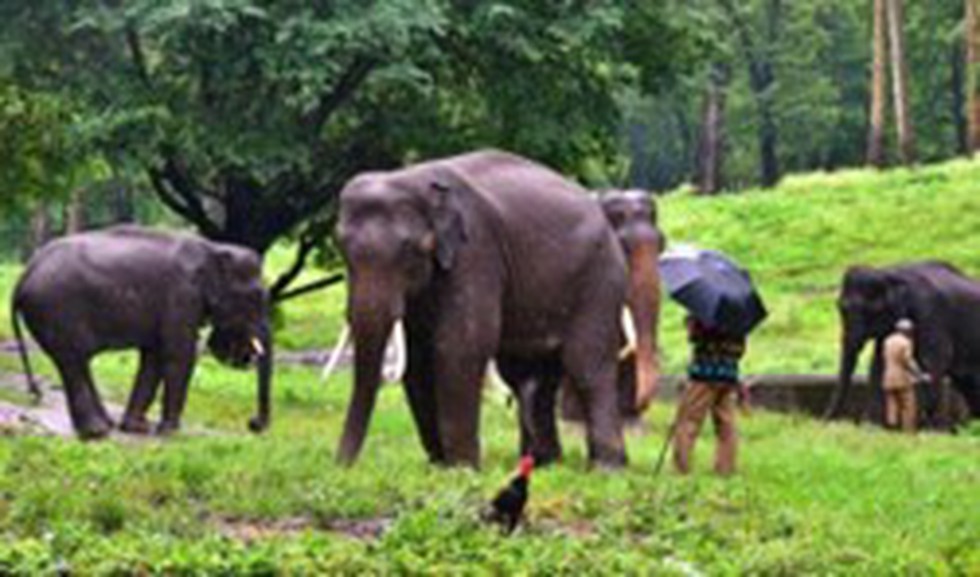
About Anamalai Tiger Reserve:
- Location:
- It is a protected area located at an altitude of 1400 m in the Anamalai Hills of Pollachi and Coimbatore District of Tamil Nadu.
- It lies South of the Palakkad gap in the Southern Western Ghats.
- It is surrounded by Parambikulum Tiger Reserve on the East, Chinnar Wildlife Sanctuary and Eravikulum National Park on the South Western side.
- The reserve is also surrounded by Nenmara, Vazhachal, Malayattur and Marayur reserved forests of Kerala.
- It was declared a Tiger reserve in the year 2007.
- Habitat:
- It supports diverse habitat types, Wet evergreen forests, semi-evergreen forests, moist deciduous, dry deciduous, dry thorn and shola forests.
- Other unique habitats like montane grasslands, savannah and marshy grasslands are also present.
- Flora:
- Around 2500 species of angiosperms are found in the Anamalai Tiger Reserve, with several species of Balsam, Crotalaria, Orchids and Kurinchi.
- The reserve is rich in wild relatives of cultivated species like mango, jackfruit, wild plantain, ginger (Zingiber officinale), turmeric, pepper (Piper longum), cardamom etc.
- Fauna: The important wild animals of the reserve include: Tiger, Asiatic elephant, Sambar, Spotted deer, Barking deer, Jackal, Leopard, Jungle cat etc.
What is Siena Drone Photo Awards?
- It is the most important worldwide competition in aerial photography and video.
- It’s a project of Siena Awards, dedicated to a different photographic genre deliberately separated from being compared to traditional photography.
- The competition is open to aerial photography and videos whose platforms also include fixed-wing aircraft, helicopters, unmanned aerial vehicles, balloons, blimps and dirigibles, rockets, kites, and parachutes.
June 29, 2023
Prelims Pointers
June 29, 2023

About Sealion:
- It is a marine mammal that belongs to the family Otariidae.
- These are known for their semi-aquatic lifestyle, spending a significant amount of time both on land and in the water.
- Appearance:
- They have a streamlined body with a large head and a long, flexible neck.
- They typically have a brown or tan coat, and adult males develop a thick mane of hair around their necks.
- Habitat:
- They inhabit rocky shorelines, islands, and sandy beaches.
- They can be found in various regions, including the Pacific Ocean, the Atlantic Ocean, and parts of the Indian Ocean.
- Diet: Sea lions are carnivorous and primarily feed on fish, such as herring, anchovies, sardines, and squid.
- Currently, there are six subspecies of sea lions: Australian sea lions, California sea lions, Galapagos sea lions, New Zealand sea lions, South American sea lions, and Steller sea lions.
What is an algal bloom?
- It is a rapid and excessive growth of algae in aquatic environments.
- It can occur in both freshwater and marine ecosystems and is typically caused by a combination of factors such as nutrient availability, temperature, light, and water conditions.
- It causes the production of a neurotoxin called domoic acid.
- These can also proliferate because of human causes such as climate change and an excess of nitrates washed out to sea.
Prelims Pointers
June 29, 2023
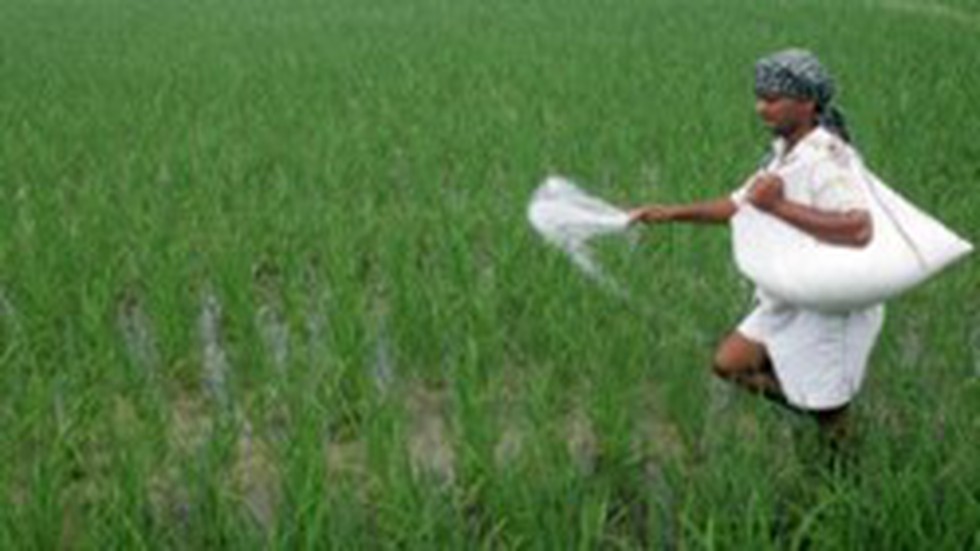
About the PM-PRANAM scheme:
- It aims to reduce the use of chemical fertilisers by incentivising the state.
- Under the scheme, the states which will adopt alternative fertilisers will be incentivised with the subsidy that is saved by reducing the use of chemical fertilisers.
- The main objective of the scheme is to encourage the balanced use of fertilisers in conjunction with bio fertilisers and organic fertilisers.
- Funding mechanism:
- It will not have a separate budget.
- It will be financed by the savings of existing fertiliser subsidies under schemes.
- Half of the subsidy savings will be passed on to the state that saves the money as a grant.
- Out of this grant, 70% can be used to create assets related to the technological adoption of alternate fertilisers and alternate fertiliser production units at the village block, and district levels.
- The remaining 30% of grant money can be used to reward and encourage farmers, panchayats, and other stakeholders involved in fertiliser reduction and awareness generation.
- The government will evaluate the utilisation of fertilisers in terms of increase or decrease in overall consumption in a year vis-a-vis consumption over the past three years.
- The Integrated Fertilisers Management System (iFMS) is the platform envisaged to track the use of fertilisers.
Prelims Pointers
June 29, 2023

About Zero FIR:
- What is it? It refers to an FIR that is registered irrespective of the area where the offence is committed.
- The police, in such a case, can no longer claim that they have no jurisdiction.
- Such an FIR is then later transferred to the police station that has the actual jurisdiction so that the investigation can begin.
- It was introduced on the recommendation of the Justice Verma Committee formed at the backdrop of the brutal Nirbhaya gang rape in Delhi in 2012.
- This puts a legal obligation on the police to begin an investigation and take quick action without the excuse of the absence of jurisdiction.
What is a first information report (FIR)?
- It is the information given to a police officer in writing as per the provisions of Section 154 of the Code of Criminal Procedure (CrPC).
- From the point of view of an informant, the main purpose of an FIR is to set criminal law into motion.
- While for the police, the main purpose of an FIR is to obtain information about alleged criminal activity and take necessary steps to produce the perpetrator(s) before a court.
The objective of a Zero FIR
- To avoid delay and any other kind of disruptions.
- To make police bound to take the jurisdiction.
- Timely jurisdiction is to be taken immediately after the registration of the FIR.
- To make sure that the investigation is done properly.
- To enable the case to proceed fast.
Prelims Pointers
June 29, 2023

About Global Environment Facility (GEF):
- It was established on the eve of the 1992 Rio Earth Summit of UNFCC to help tackle our planet’s most pressing environmental problems.
- It is a family of funds dedicated to confronting biodiversity loss, climate change, pollution, and strains on land and ocean health.
- It provides financial assistance for five major international environmental conventions:
- The Minamata Convention on Mercury.
- The Stockholm Convention on Persistent Organic Pollutants (POPs).
- The United Nations Convention on Biological Diversity (UNCBD)
- The United Nations Convention to Combat Desertification (UNCCD).
- The United Nations Framework Convention on Climate Change (UNFCCC).
- It has 184 member countries, including India.
- The governing council is the main governing body of GEF which comprises 32 members appointed by constituencies of GEF member countries (14 from developed countries, 16 from developing countries, and two from economies in transition).
- Its secretariat is based in Washington, D.C.
Prelims Pointers
June 29, 2023
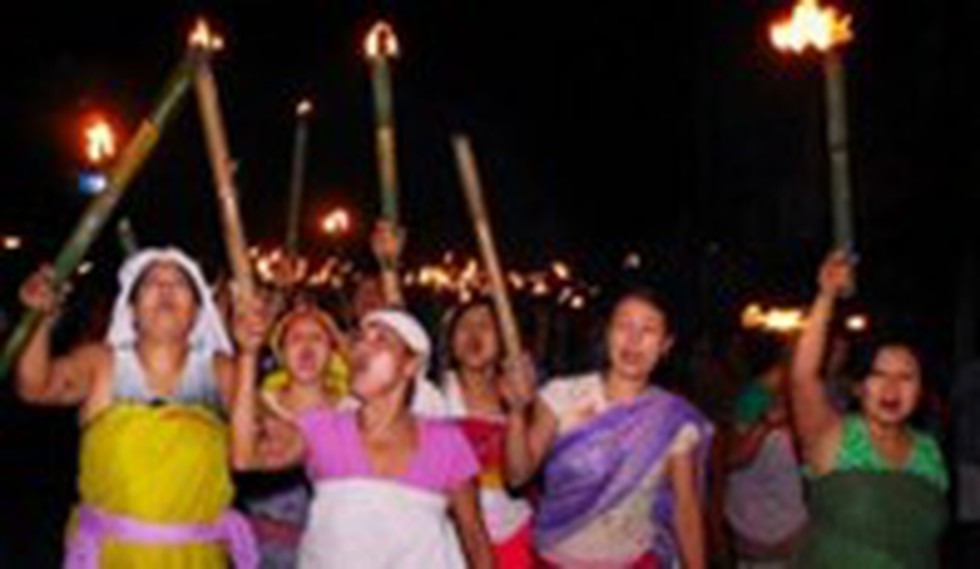
About Meira Paibis:
- Who are they? The most visible organised face of civil society activists have been the Meira Paibis or “women torch bearers”, so called because of the flaming torches that they hold aloft while marching in the streets, often at night.
- They, also known as Imas or Mothers of Manipur, are Meitei women who come from all sections of society in Manipur.
- Members of this group are widely respected and represent a powerful moral force.
- The Meira Paibis are loosely organised, usually led by groups of senior women, but have no rigid hierarchy or structure or any overt political leanings.
What social role does the Meira Paibis play?
- The Meira Paibi was formed in 1977; presently, it is one of the largest grassroots movements in the world.
- Its initial focus on fighting alcoholism and drug abuse has now expanded to countering human rights violations and the development of society at large.
Prelims Pointers
June 29, 2023

About Public Issue of shares:
- When a company raises funds by selling or issuing its equity shares to the public through an offer document, it is called a public issue.
- Initial Public Offerings (IPO): IPO is a type of issue where an unlisted company raises capital by making a fresh issue of securities or offering its existing securities for sale to the public for the first time.
- Further Public Offer (FPO) / Follow-on Public Offer (FPO): When a listed company wants additional capital, it makes either a fresh issue of securities or an offer for sale of existing securities to the public it is called a Follow-on Public Offer (FPO).
- Offer for Sale (OFS):
- Institutional investors like venture funds, private equity funds etc., invest in a company at its nascent stage.
- Once the company grows bigger, these investors sell their shares to the public through the issue of an offer document and subsequently, shares get listed on the stock exchange.
- Offer for sale (OFS) is also a special mechanism through which the promoters can sell their stake in the market.
- Only promoters or shareholders holding more than 10% of the share capital in a company can come up with such an issue.
- Both retail and institutional investors can invest in an OFS and buy shares of the Company.
Prelims Pointers
June 29, 2023
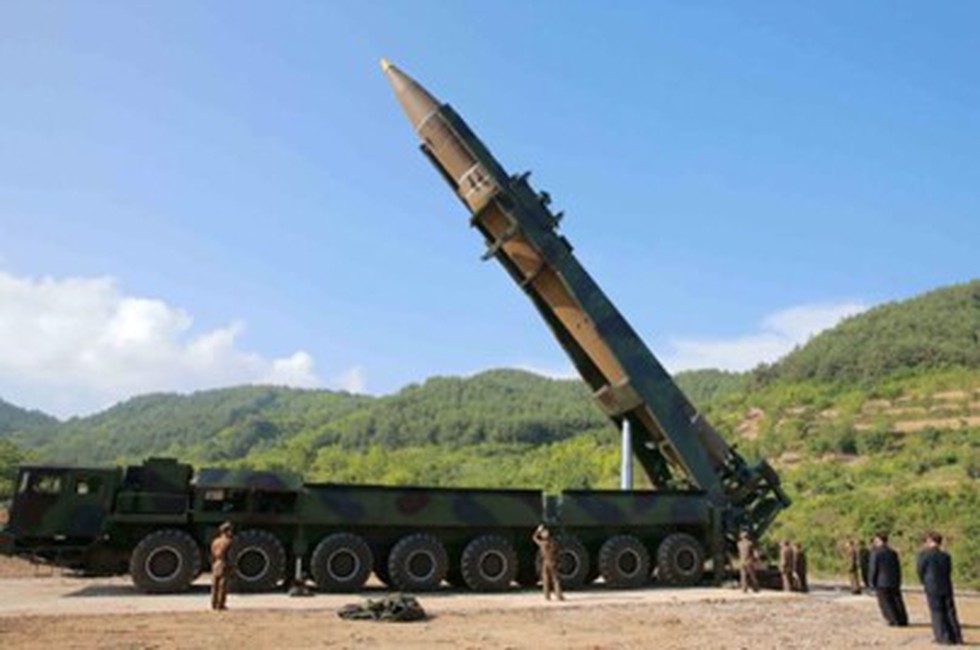
About State of Armaments, Disarmament and International Security:
- It is an annual assessment of the Sweden-based think tank Stockholm International Peace Research Institute (SIPRI).
- Highlights:
- As on January 2023, the world has 9,576 nuclear weapons in military stockpiles for potential use.
- That is 86 more than the number in January 2022.
- Of this stockpile, an estimated 3,844 warheads were ‘deployed’ with missiles and aircraft.
- Around 2,000 of these ‘deployed’ weapons — nearly all of which belonged to Russia or the USA—were kept in a state of high operational alert, meaning that they were fitted to missiles or held at airbases hosting nuclear bombers.
- Nine nuclear-armed states — the United States, Russia, the United Kingdom, France, China, India, Pakistan, North Korea and Israel — continue to modernise their nuclear arsenals and have deployed several new nuclear-armed or nuclear-capable weapon systems in 2022.
- The estimate of the size of China’s nuclear arsenal increased from 350 warheads in January 2022 to 410 in January 2023.
- India was estimated to have a growing stockpile of about 164 nuclear weapons, up from 160 the previous year. These weapons were assigned to a maturing nuclear triad of aircraft, land-based missiles and nuclear-powered ballistic missile submarines (SSBNs).
- Pakistan possessed approximately 170 nuclear warheads as of January 2023 — up from 165 from the previous year.
Prelims Pointers
June 29, 2023
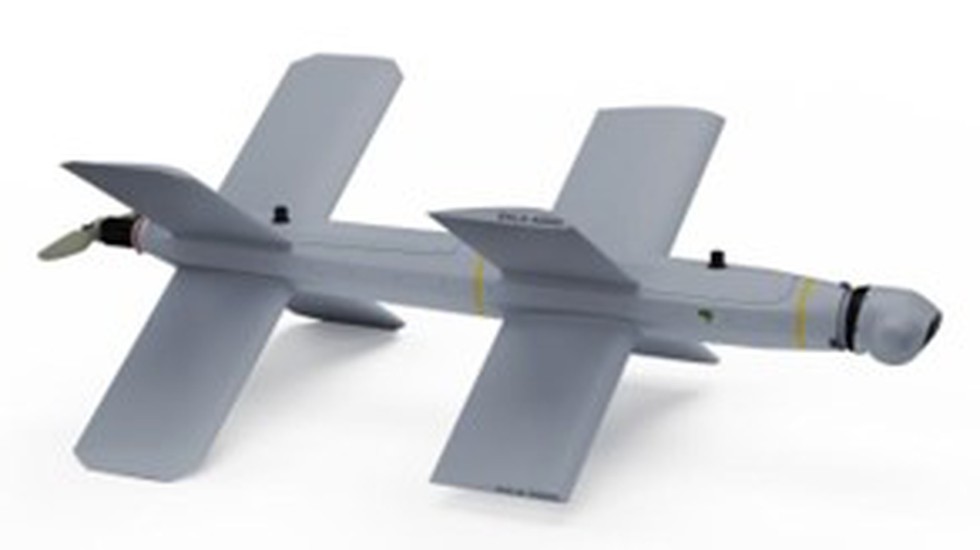
About Lancet Drone:
- It is a high-precision kamikaze drone operated by the Russian Army to strike remote ground and sea targets.
- It is developed and manufactured by Russian defence company Zala Aero, a subsidiary of Kalashnikov Group.
- Features:
- They are recognisable by their distinct X-shaped wings, which are attached to an elongated fuselage and detachable camera-guidance head/nose.
- Powered by an electric motor unit, the drone can travel at a speed between 80km/h and 130km/h.
- It has a maximum range of 40 kilometres and can carry out a precision strike autonomously.
- It can carry a maximum payload of up to 3kg of sensors and explosive warheads.
- It can stay in the air for 30 minutes and hit targets at a range of up to approximately 40km.
- It has been designed to provide real-time video and imagery to the control station.
- It incorporates artificial intelligence visual identification (AIVI) technology for real-time recognition and classification of targets.
What is a kamikaze drone?
- A kamikaze drone, also called a suicide drone or, more formally, a loitering munition, is an unmanned aerial vehicle that is designed to self-destruct after serving its purpose.
- The name “loitering” derives from a defining characteristic: the ability to “loiter” in the air for an extended period of time before striking, giving the targeter time to decide when and what to strike.
Prelims Pointers
June 29, 2023

About Critical Minerals:
- It is a metallic or non-metallic element that has two characteristics.
- It is essential for the functioning of our modern technologies, economies or national security and
- There is a risk that its supply chains could be disrupted.
- The 'criticality' of minerals changes with time as supply and society's needs shift.
- Applications:
- They are used to manufacture advanced technologies, including mobile phones, computers, fibre-optic cables, semiconductors, banknotes, and defence, aerospace and medical applications.
- Many are used in low-emission technologies, such as electric vehicles, wind turbines, solar panels, and rechargeable batteries.
- Some are also crucial for common products, such as stainless steel and electronics.
- Examples: antimony, beryllium, bismuth, cobalt, copper, gallium, germanium, lithium, vanadium etc.
- Top Producers: Chile, Indonesia, Congo, China, Australia and South Africa.
What is the Mineral Security Partnership?
- It is an ambitious new initiative to bolster critical mineral supply chains, announced by the United States (US) and key partner countries in June 2022.
- The goal of the alliance is to ensure that critical minerals are produced, processed, and recycled in a manner that supports the ability of countries to realise the full economic development benefit of their geological endowments.
- The focus of the grouping would be on the supply chains of minerals such as Cobalt, Nickel, Lithium and also the 17 “rare earth” minerals.
- India was recently inducted into the Mineral Security Partnership (MSP).
Prelims Pointers
June 29, 2023
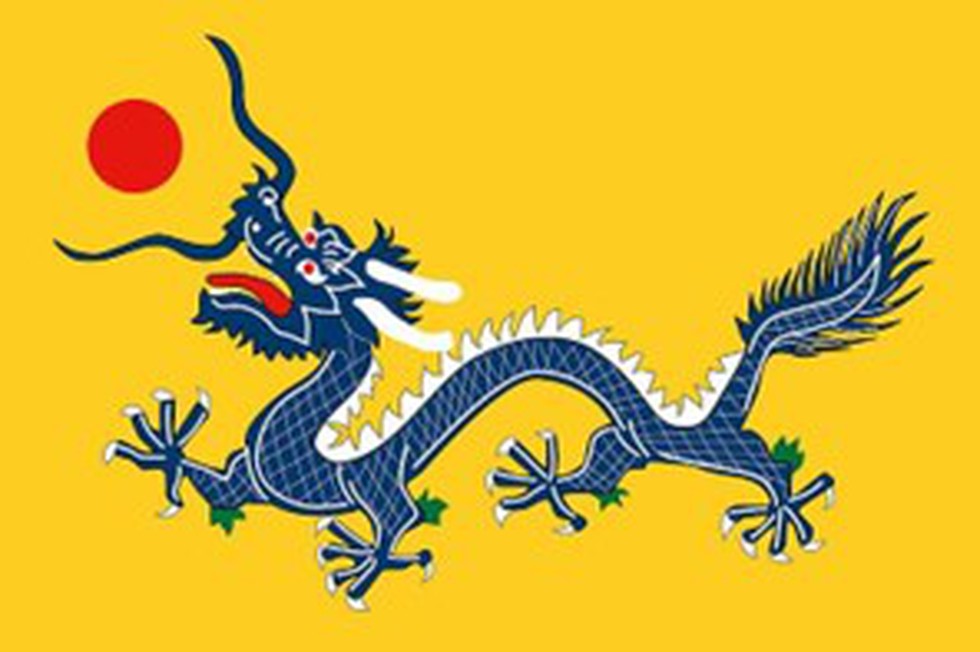
About Qing Dynasty:
- The Qing Dynasty, or Ch’ing Dynasty, or Manchu Dynasty, was the final imperial dynasty in China, lasting from 1644 to 1912.
- It was preceded by the Han-led Ming Dynasty (1368–1644) and followed by the Republic of China era (1912–1949).
- Under the Qing, the empire's territory grew to treble its size under the preceding Ming dynasty (1368–1644).
- The Qing Dynasty annexed Mongolia, Northeast China, Xinjiang, Tibet, and Taiwan, establishing a territory larger than that of today's China — the largest China has ever been.
- History:
- In the early 1600s, the Manchu people of northern China began to unite against the Ming Dynasty.
- They formed a somewhat military society and mobilised a large army.
- In 1644, the Manchus crossed the Great Wall and invaded China.
- They soon took control of the Chinese capital city, Beijing, and declared the beginning of a new dynasty called the Qing.
- The first Qing Emperor was a five-year-old boy who became the Shunzhi Emperor.
- The Manchus continued to expand and conquer more of China.
- In 1683, under the Kangxi Emperor, the Qing Empire included all of China.
- Features:
- Model of Government: The Manchu rulers modelled many of their government practices on those of the previous Chinese Ming dynasty (1368–1644). For example, they employed a civil service examination system, much like in previous Chinese dynasties, to recruit Chinese government officials.
- Cultural attitudes were strongly conservative.
- Art: The arts flourished: literati painting was popular, novels in the vernacular developed substantially, and Jingxi (Peking opera) developed.
- Trade: Qing porcelain, textiles, tea, paper, sugar, and steel were exported to all parts of the world.
- How did it end?
- Military campaigns in the latter part of the 18th century depleted government finances, and corruption grew.
- These conditions, combined with population pressures and natural disasters, led to the Opium Wars and the Taiping and Nian rebellions, which in turn so weakened the dynasty that it was unable to rebuff the demands of foreign powers.
- The dynasty ended with the republican revolution of 1911 and the abdication of the last emperor in 1912.
June 28, 2023
Prelims Pointers
June 28, 2023
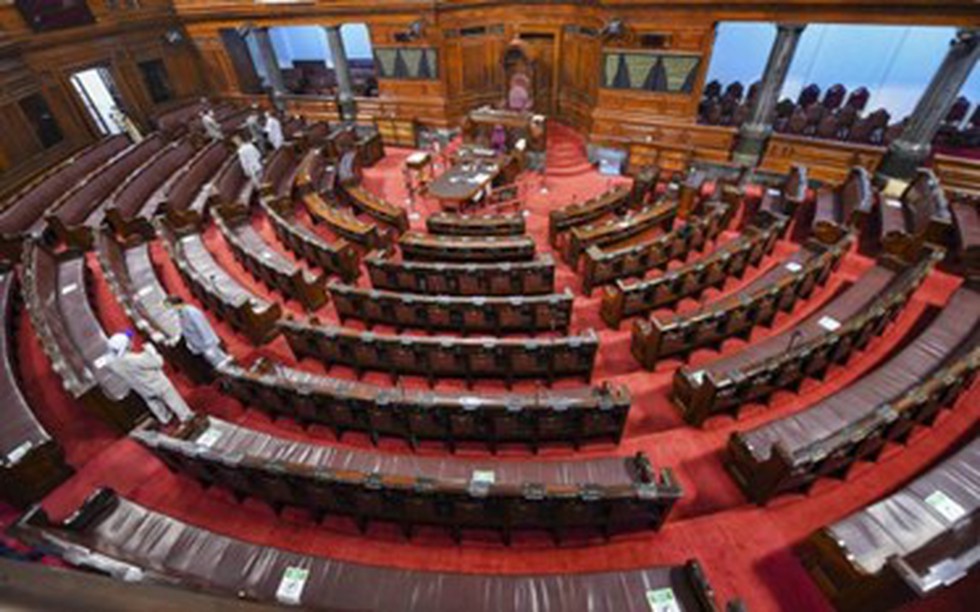
About Rajya Sabha:
- Origin: India follows the British parliamentary system, so the Rajya Sabha, or the Upper House of Parliament, is equivalent to the House of Lords in the United Kingdom.
- Present strength: The Rajya Sabha currently has 245 members, including 233 elected members and 12 nominated. As per the constitutional limit, the Upper House strength cannot exceed 250.
- Membership: While 233 members are elected from states and Union Territories (UTs), the President of India nominates the remaining 12 from the fields of art, literature, science and social services.
- Tenure: Every Rajya Sabha MP has a tenure of six years, and elections to one-third of seats are held every two years.
- Vacancy: According to Section 154 of the Representation of the People Act 1951, a member chosen to fill a casual vacancy will serve for the remainder of his predecessor's term of office.
- Chair: The Indian vice-president is the chairperson of the Upper House, which also has a deputy chair.
Election Process to Rajya Sabha:
- While Lok Sabha members are elected directly by the voters, Rajya Sabha members are elected indirectly by the people, that is, by the elected Members of a state's Legislative Assembly (MLAs).
- How many Rajya Sabha members a state can send depends on its population.
- MLAs vote in the Rajya Sabha elections in what is called proportional representation with the single transferable vote (STV) system. Each MLA’s vote is counted only once.
- In this system, MLAs don’t vote for each seat.
- Instead, the MLAs are given a paper with the names of all candidates. They have to give their order of preference for each candidate, marking 1,2,3… against their names.
- The ballot is open, but MLAs have to show their ballots to an authorised agent from their party to prevent practices such as cross-voting. A vote cannot be counted if the ballot is not shown to the agent. Independent MLAs cannot show their ballot to anyone.
- If a qualifying number of voters choose a candidate as their first choice, he or she is elected.
- The remaining votes go to the next candidates but with a lesser value. So, MLAs also vote for candidates from other parties.
- The candidate that gets rank 1 from an MLA secures a first preference vote. In order to win, a candidate needs a specific number of such first-preference votes. This number depends on the strength of the state Assembly and the number of MPs it sends to Rajya Sabha.
- To win, a candidate should get a required number of votes which is known as a quota or preference vote. The formula is = [Total number of votes/(Number of Rajya Sabha seats + 1)] + 1.
- However, the formula is changed in case more than one seat needs to be filled. The total number of votes required for a candidate in the case is = [(Number of votes x 100) / (Vacancies + 1)] + 1.
Prelims Pointers
June 28, 2023
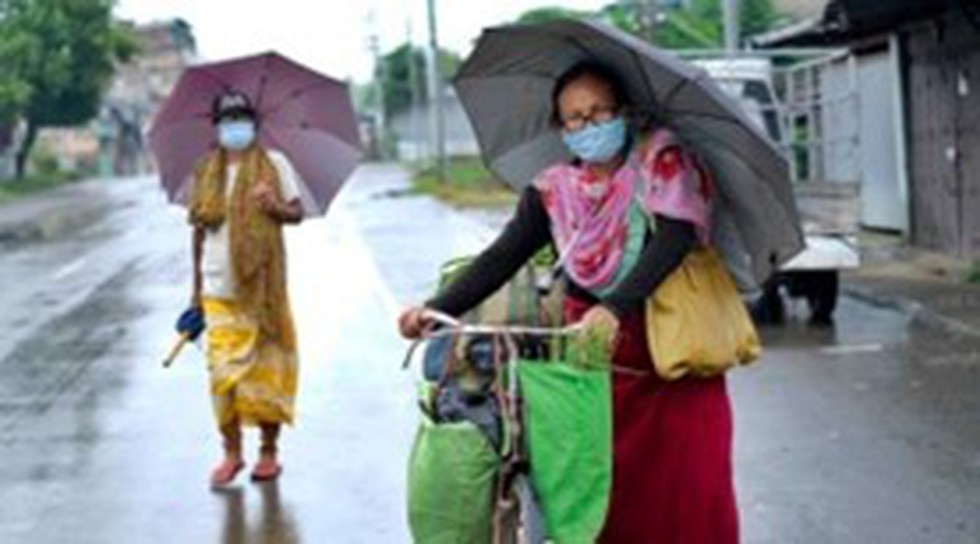
About Autonomous District Councils (ADC):
- The Sixth Schedule provides a list of ten tribal areas in Assam (3), Meghalaya (3), Tripura (1) and Mizoram (3).
- Each of these tribal areas constitutes an autonomous district. Each autonomous district has an Autonomous District Council (ADC).
- Membership: ADCs have up to 30 members with a term of five years, of whom four are nominated by the governor and the remaining 26 are elected on the basis of adult franchise.
- Tenure: The term of the District Councils is for five years from the date of their constitution.
- Functions: The functions of ADCs as defined in schedule 6 of the constitution included –
- making laws on land,
- management of forests, except reserved forests,
- appointment of traditional chiefs and headmen,
- making rules regulating the inheritance of property, marriage, divorce, the constitution of village courts,
- It can establish, construct or manage primary schools, dispensaries, markets, ferries, fisheries, roads and so on in the district.
- It can also make regulations for the control of money lending and trading by non-tribals. But such regulations require the assent of the governor.
- Revenue source: The main Revenue Sources of ADCs, as specified in the Sixth Schedule, were:
- taxes on professions, trades, callings and employment;
- taxes on animals, vehicles and boats;
- taxes on the entry of goods into a market and sale therein, and tolls on passenger and goods carried on ferries; and
- taxes for the maintenance of schools, dispensaries or roads.
Prelims Pointers
June 28, 2023
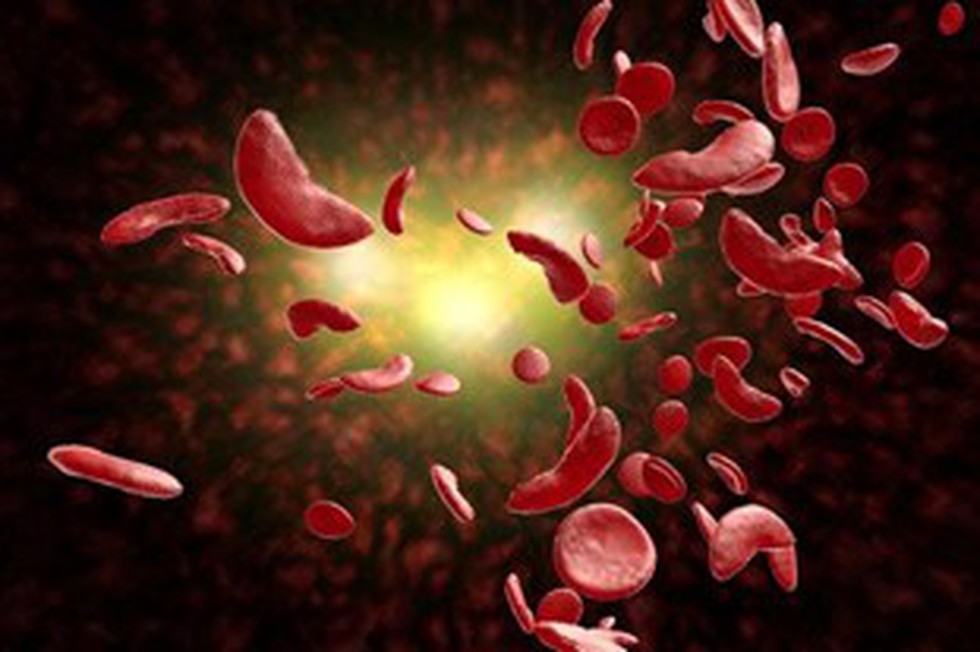
About National Sickle Cell Anaemia Elimination Mission:
- It was announced as part of the Union Budget 2023.
- Vision: Eliminate sickle cell disease (SCD) as a public health problem in India before 2047.
- The overall aim is to enable access to affordable and quality health care for all SCD patients and to lower the prevalence through awareness, change of practices and screening interventions.
- The mission will entail awareness creation, universal screening of seven crore people in the 0-40 years age group in affected tribal areas and counselling through collaborative efforts of central ministries and state governments.
- Initially, the focus shall be on 17 states with higher prevalence of SCD,, Gujarat, Maharashtra, Rajasthan, Madhya Pradesh, Jharkhand, Chhattisgarh, West Bengal, Odisha, Tamil Nadu, Telangana, Andhra Pradesh, Karnataka, Assam, Uttar Pradesh, Kerala, Bihar and Uttarakhand.
What is Sickle Cell Anaemia?
- It is an inherited blood disorder.
- Itaffects haemoglobin, the molecule in red blood cells that delivers oxygen to cells throughout the body.
- People with this disease have atypical haemoglobinmolecules called haemoglobin S, which can distort red blood cells into a sickle, or crescent, shape.
- These sickle cells also become rigid and sticky, which can slow or block blood flow.
- What causes it?
- The cause of Sickle cell disease is a defective gene called a sickle cell gene.
- A person will be born with sickle cell disease only if two genes are inherited—one from the mother and one from the father.
- Symptoms:
- Early stage: Extreme tiredness or fussiness from anaemia, painfully swollen hands and feet, and jaundice.
- Later stage: Severe pain, anaemia, organ damage, and infections.
- Treatments:
- The only cure for this disease is bone marrow or stem cell transplantation.
- However, there are treatments that can help relieve symptoms, lessen complications, and prolong life.
Prelims Pointers
June 28, 2023
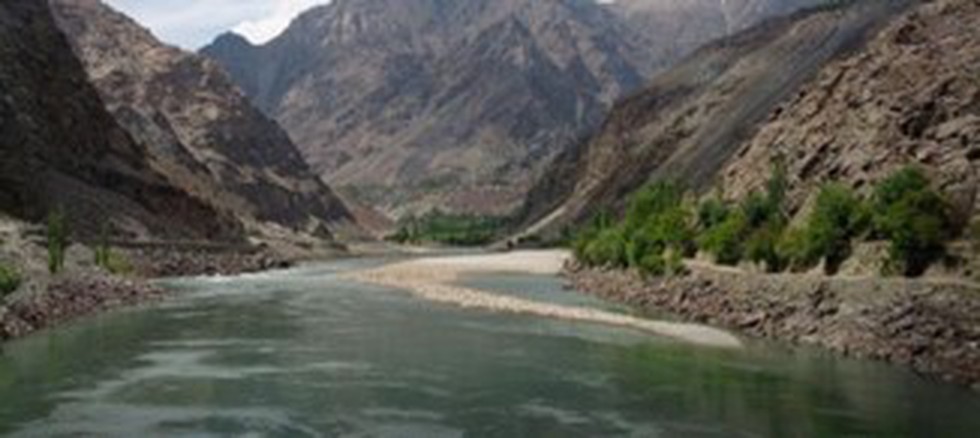
About Indus Waters Treaty:
- It was signed in September 1960 between India and Pakistan.
- The treaty was brokered by the World Bank, which, too, is a signatory to the treaty.
- Provisions:
- The treaty fixed and delimited the rights and obligations of both countries concerning the use of the waters of the Indus River system.
- It gives control over the waters of the three "eastern rivers' -- the Beas, Ravi, and Sutlej -- to India while control over the waters of the three "western rivers' ' -- the Indus, Chenab, and Jhelum -- to Pakistan.
- The Treaty allows India to use the western river waters for limited irrigation use and unlimited non-consumptive use for such applications as power generation, navigation, floating of property, fish culture, etc.
- It lays down detailed regulations for India in building projects over the western rivers.
- The Treaty sets out a mechanism for cooperation and information exchange between the two countries regarding their use of the rivers. It is known as the Permanent Indus Commission, which has a Commissioner from each country.
Prelims Pointers
June 28, 2023

About Unicorn Startup:
- The term unicorn refers to a privately held startup company with a value of over $1 billion.
- It is commonly used in the venture capital industry. The term was first popularised by venture capitalist Aileen Lee when she referred to the 39 startups that had a valuation of over $1 billion as unicorns.
- The valuation of unicorns is not expressly linked to their current financial performance but is largely based on their growth potential, as perceived by investors and venture capitalists who have taken part in various funding rounds.
- There are more than 1,000 unicorn companies around the world as of March 2022.
What are Gazelles and Cheetahs in the Startup ecosystem?
- Gazelles:
- They are those start-ups founded after the year 2000 and have the potential to go Unicorn in 2 years.
- Their valuation ranges from US$500mn to US$1bn.
- Once you exceed the $1 bn valuation, you become a unicorn.
- Cheetahs:
- They are those start-ups founded after the year 2000 and have the potential to become a Unicorn in the next four years.
- Their estimated valuation ranges between US$200mn to US$500mn.
Prelims Pointers
June 28, 2023
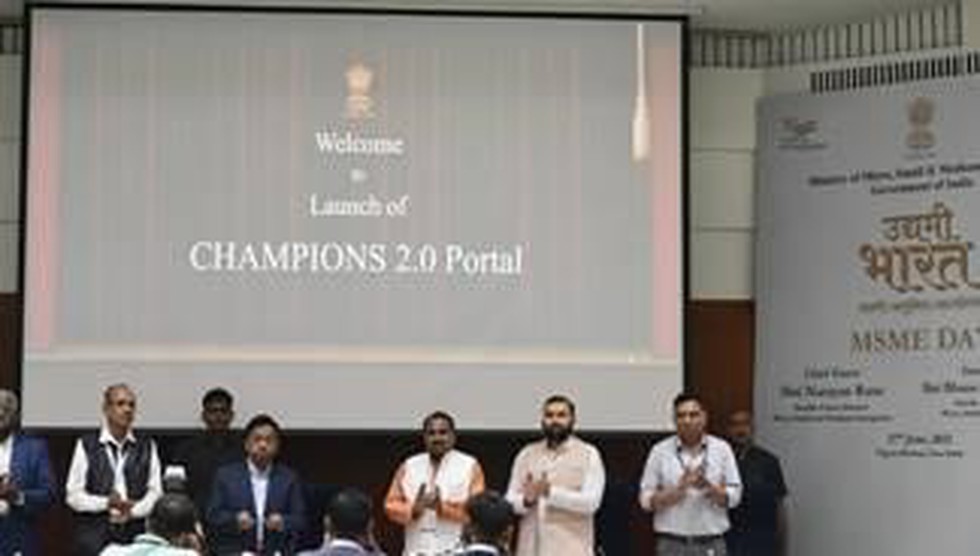
About CHAMPIONS 2.0 Portal:
- Champions portal is a single-window grievance redressal portal for Micro, Small & Medium Enterprises.
- The CHAMPIONS stands here for the Creation and Harmonious Application of Modern Processes for Increasing Output and National Strength. Accordingly, the name of the system is CHAMPIONS.
- It was launched on June 1, 2020, by the Ministry of Micro, Small & Medium Enterprises.
- It is created in a Hub & Spoke Model.
- The Hub is situated in New Delhi in the Secretary MSME’s office. The spokes will be in the States in various offices and institutions of the Ministry.
- As per the operational requirements, the MSME Ministry had earlier expanded the scope of the portal by onboarding 25 ministries/departments/ government institutions, 32 state governments, 58 banks/
- New Features:
- The revamped portal will now incorporate AI-driven chatbots and will be available in 11 languages, including Hindi, Gujarati, Bengali, and Kannada.
- The portal will also have a real-time feedback mechanism for its analysis.
Prelims Pointers
June 28, 2023
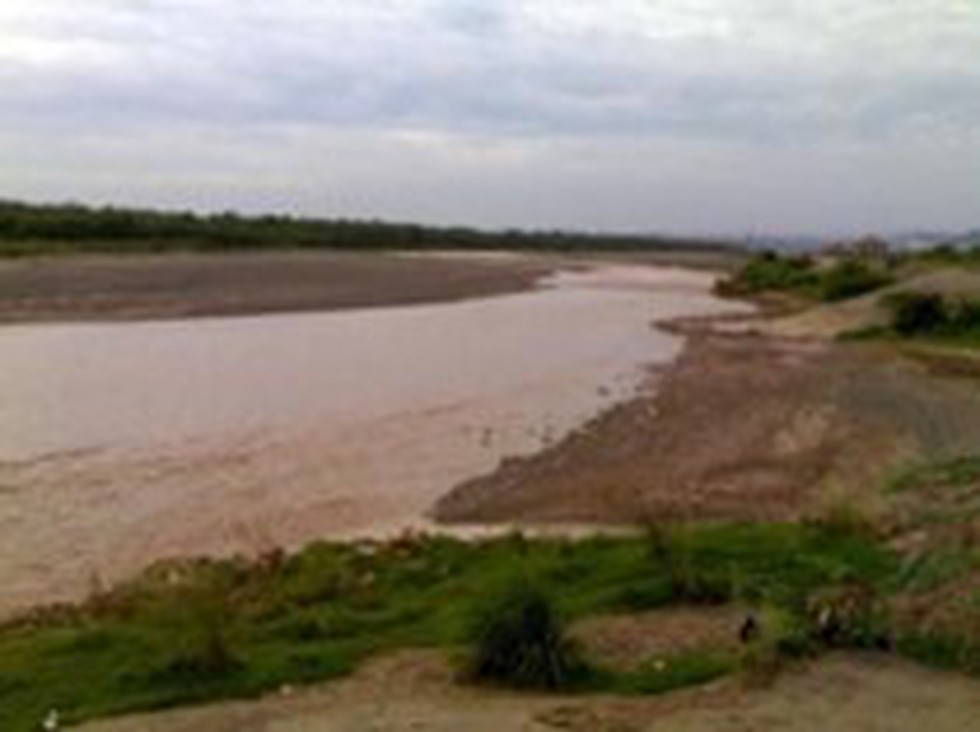
About Tectonic deformation:
- It refers to the changes and movements that occur within the Earth's crust due to tectonic forces.
- The Earth's lithosphere, which is composed of the crust and the uppermost part of the mantle, is divided into several large and small tectonic plates.
- These plates are in constant motion and interact with each other at their boundaries.
Key Findings:
- Researchers suggested that tectonic activities may have played a role in the extinction of the Vedic Saraswati River that once flowed through the region.
- The Piedmont zone of Haryana is actively deforming and could become a future seismic hazard zone.
- The Piedmont zone (a transition zone between the rugged mountains and the relatively flat plains) between the Ghaggar and Yamuna River basins showed signs of active tectonic deformations.
Prelims Pointers
June 28, 2023
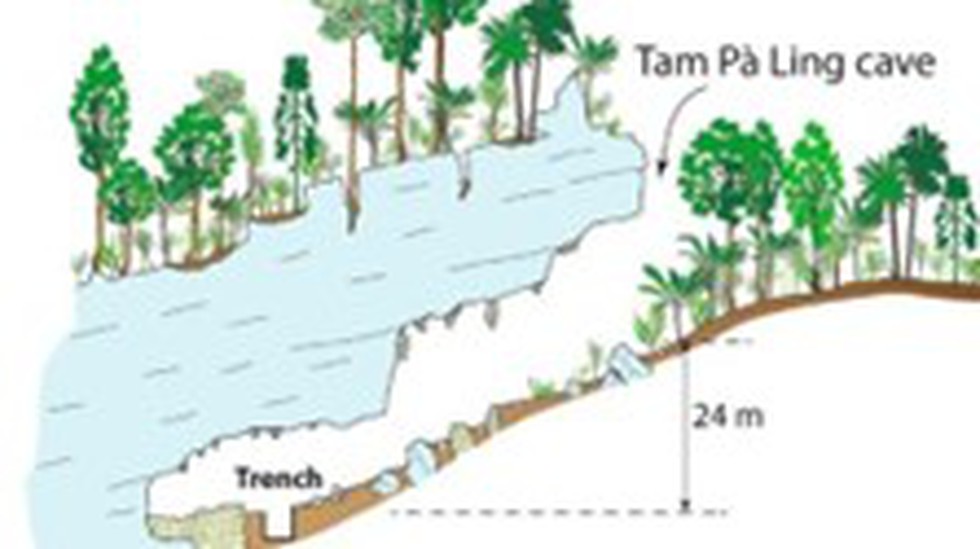
Key findings:
- It revealed that humans were present in the vicinity of Tam Pà Ling Cave for roughly 56,000 years.
- It also confirmed that, far from reflecting a rapid dump of sediments, the site contains sediments that accumulated steadily over some 86,000 years.
- The age of the lowest fossil, a fragment of a leg bone found seven metres deep, suggests modern humans arrived in this region between 86,000 and 68,000 years ago.
- Even researchers found a toothsome 150,000 years old belonging to a Denisovan.
- This suggests the site may lie on a previously used dispersal route among hominins.
Key Facts about Tam Pà Ling Cave
- It is a sloping cave situated high in the Annamite mountain range in Northern Laos.
- The stratigraphy of the site indicates formation by periodic slope wash deposition from the muddy slope at the entrance of the cave.
Who are Denisovans?
- They are extinct human relatives otherwise known only from remains found in Siberia and Tibet.
- They lived lakhs of years ago, coexisting with Neanderthals in some regions and interbreeding with early modern humans in some cases.
- They were first identified as a separate species in 2010, following the discovery of a fragment of a finger bone and two teeth, dating back to about 40,000 years ago, in the Denisovan Cave in Siberia.
Prelims Pointers
June 28, 2023
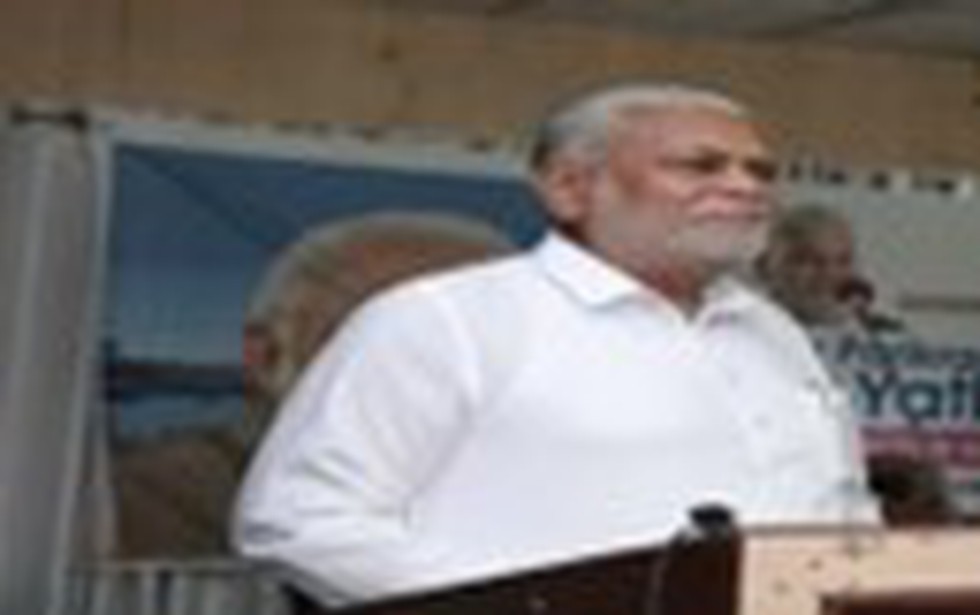
About Report Fish Disease App:
- It will strengthen the farmer-based disease reporting system and for improving the reporting of aquatic animal diseases in the country.
- The app has been developed by ICAR-NBFGR under National Surveillance Programme for Aquatic Animal Diseases (NSPAAD).
- Funded under: Pradhan Mantri Matsya Sampada Yojana by the Department of Fisheries, Ministry of Fisheries, Animal Husbandry and Dairying, Government of India.
What are the benefits?
- It will help the farmers in reporting the incidence of diseases in finfish, shrimps, and molluscs on their farms with the field-level officers and fish health experts.
- This shall help farmers in getting scientific advice for the efficient management of the disease.
- The data regarding the diseases will be stored on temporal & spatial scales and can be used for mapping the disease cases.
- It would support farmers in improving farmer-based reporting, getting scientific advice, and reducing losses due to diseases, thereby increasing farmers’ income.
Key Facts about Pradhan Mantri Matsya Sampada Yojana
- It is a flagship scheme for focused and sustainable development of the fisheries sector in the country with an estimated investment of Rs. 20,050 crores for its implementation during a period of 5 years from FY 2020-21 to FY 2024-25 in all States/Union Territories.
- What are the aims of the scheme?
- It aims at enhancing fish production by an additional 70 lakh tonnes by 2024-25.
- Increasing fisheries export earnings to Rs.1,00,000 crore by 2024-25.
- Doubling of incomes of fishers and fish farmers, reducing post-harvest losses from 20-25%.
- Nodal Ministry: Ministry of Fisheries, Animal Husbandry and Dairying
Prelims Pointers
June 28, 2023

About UTPRERAK:
- The Unnat Takniki Pradarshan Kendra (UTPRERAK) is the Centre of Excellence to Accelerate Adoption of Energy Efficient Technologies and seeks to play a catalytic role in improving the energy efficiency of the Indian industry.
- It is also named as Advanced Industrial Technology Demonstration Centre (AITDC)
- It has been set up by the Bureau of Energy Efficiency (BEE), Ministry of Power.
What are the mandates?
- The Centre is mandated to become the key reference and resource institution on industrial energy-efficient technologies.
- It will demonstrate and showcase energy-efficient technologies in key industry sectors.
- It will act as an exhibition cum information centre and knowledge repository.
- It will be a knowledge exchange platform where best practices from across various key sectors can be diffused among industry professionals through workshops and seminars.
Key facts about the Bureau of Energy efficiency
- It is a statutory body under the Union Ministry of Power.
- It was set up under the provisions of the Energy Conservation Act of 2001.
- Mission: Develop policy and strategies with a thrust on self-regulation and market principles within the overall framework of the Energy Conservation Act (EC Act), 2001.
- Primary Objective: To reduce energy intensity in the Indian economy.
June 27, 2023
Prelims Pointers
June 27, 2023
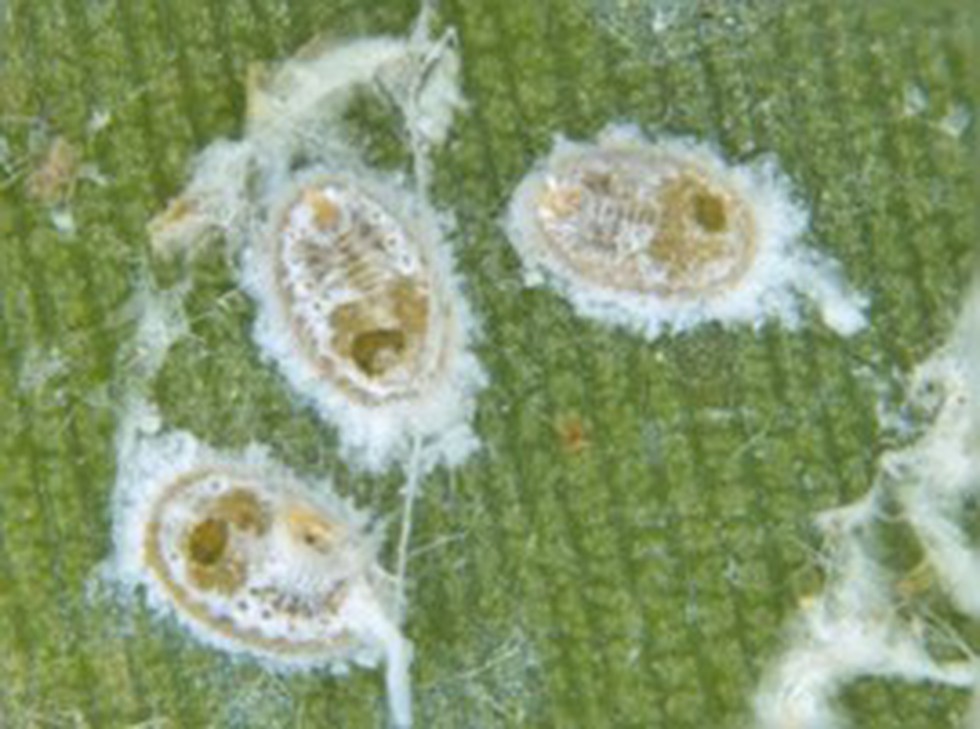
About Whitefly:
- These are winged insects that have soft bodies and are closely related to aphids.
- These are tiny, sap-sucking insects that may become abundant in vegetable and ornamental plantings, especially during warm weather.
- It is naturally distributed in Belize, Guatemala, and Mexico (Martin, 2008), and subsequently, it has spread to 22 other countries in Central and South America.
- It mainly infests coconut palms and other broad-leaved hosts in its native range
- It is an invasive insect.
How the insect attacks
- The whitefly starts attacking the lower leaves of the coconut palm.
- It drains the sap from the underside of the leaf, producing a significant amount of honeydew, which settles on the upper surface of the next lower leaf, leading to the growth of black, sooty mould.
- This is the secondary infection from the whitefly infestation.
- It has a serious impact on the production of coconut.
- Not only does it reduce the size of the coconut, but it also decreases the coconut’s water content.
Prelims Pointers
June 27, 2023

About the World Competitiveness Index:
- The IMD World Competitiveness Yearbook (WCY), was first published in 1989.
- It is a comprehensive annual report and worldwide reference point on the competitiveness of countries.
- It analyses and ranks countries according to how they manage their competencies to achieve long-term value creation.
- It is based on 336 competitiveness criteria and four factors, namely Economic performance, Government efficiency, Business efficiency, and Infrastructure.
Key Points of the Index
- Denmark, Ireland, and Switzerland have been named the top three among 64 economies measured for their global competitiveness.
- India fell three rungs to finish 40th but is still in a better position than it was between 2019-2021 when it was placed 43rd three years in a row.
- India improved in government efficiency but fared slightly poorer than other countries in business efficiency, infrastructure, and economic performance.
- Specifically, the top three measures that helped India in its score are exchange rate stability, compensation levels, and improvements in pollution control.
Prelims Pointers
June 27, 2023
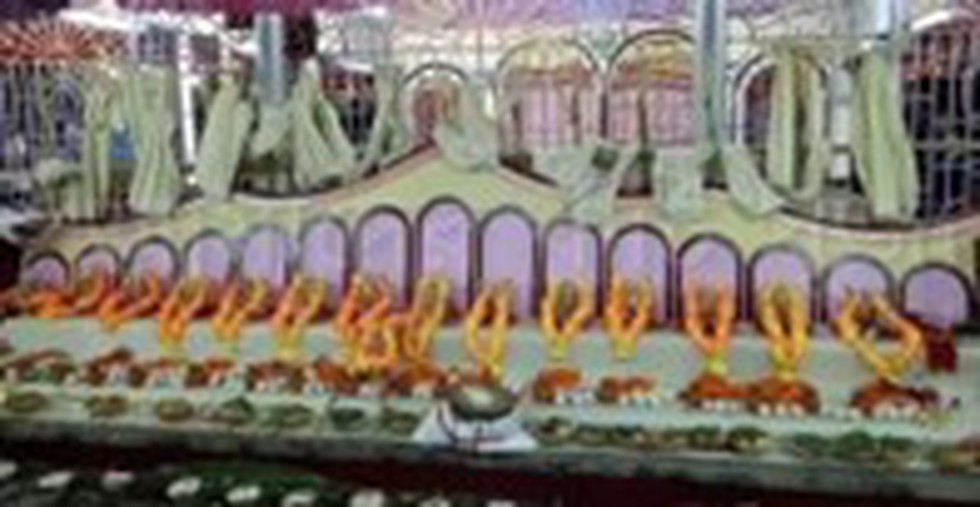
About Kharchi Puja:
- It is one of the main festivals of Tripura.
- It is performed during the months of July-August on the eighth day of the new moon.
- The meaning of Kharchi can be understood by splitting the word into two Tripuri words “Khar” or Kharta meaning sin and “Chi” or si meaning cleaning. Hence it signifies the cleansing of our sins.
- It occurs during the month of ‘Ashad’ on the ‘Shukla Ashtami’ day.
- The fourteen Gods are worshipped by the Royal priest, ‘Chantai.
- It lasts for seven days, and it takes place at old Agartala in the Fourteen Gods temple known as the ‘Chaturdasha Devata’ temple premises.
- The Kharchi Puja deities do not have a full body; they have only heads which are worshipped.
- On the day of the puja, the fourteen Gods are taken from the temple to the river Saidra by the Chantai members and given bathe with the holy river water, then carried back to the temple.
- This festival's customs are completely related to the authentic Tripuri traditions.
Prelims Pointers
June 27, 2023

About the NANDI Portal:
- It is developed by the Department of Animal Husbandry and Dairying (DAHD) in collaboration with the Central Drugs Standard Control Organization (CDSCO) through the Centre for Development of Advanced Computing (CDAC).
- Significance of the portal
- It will streamline the regulatory approval process for veterinary products.
- It will enhance transparency and efficiency in assessing and examining proposals for veterinary drugs and vaccines.
- It will be more streamlined through seamless integration with the SUGAM portal of the Central Drugs Standard Control Organization.
- It will promote the well-being of livestock and the livestock industry.
- It will bring about growth and innovation by enabling quick and easy coordination between various Government departments and institutes.
Key Facts about Central Drugs Standard Control Organization
- It is the National Regulatory Authority (NRA) of India for the medical devices industry under the provisions of the Drugs & Cosmetics Rules.
- It works under the Ministry of Health & Family Welfare.
- Drugs Controller General of India (DCGI) is the head of the CDSCO.
- Headquarters: New Delhi.
- Under the Drugs and Cosmetics Act, CDSCO is responsible for,
- Approval of New Drugs;
- Conduct Clinical Trials;
- Laying down the standards for Drugs;
- Control over the quality of imported Drugs in the country;
Prelims Pointers
June 27, 2023
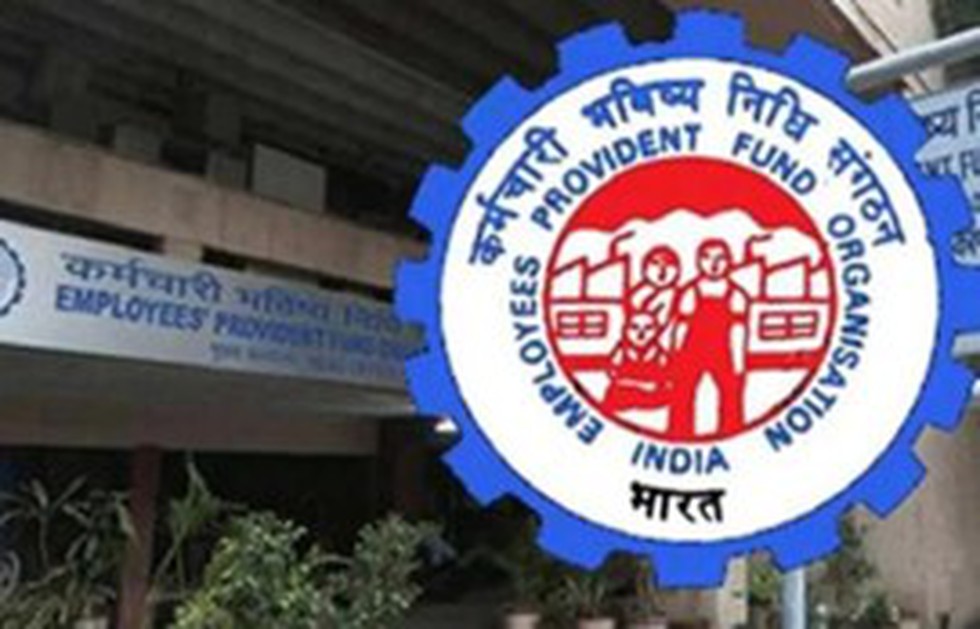
About Employees’ Provident Fund Organisation (EPFO)
- It is a statutory bodythat came into existence under the Employees’ Provident Fund and Miscellaneous Provisions Act, of 1952.
- The Act and Schemes framed there under are administered by a tripartite Board known as the Central Board of Trustees, Employees' Provident Fund, consisting of representatives of Government (Both Central and State), Employers, and Employees.
- The Board administers a contributory provident fund, a pension scheme, and an insurance scheme for the workforce engaged in the organized sector in India.
- It is one of the world’s largest organizations in terms of clientele and the volume of financial transactions undertaken by it.
- The Board is assisted by the Employees’ PF Organization (EPFO), consisting of offices at 122 locations across the country.
- The EPFO is under the administrative control of the Ministry of Labour and Employment, Government of India.
- The Board operates three schemes, namely:
- The Employees' Provident Funds Scheme 1952 (EPF) and its features
- Accumulation plus interest upon retirement and death.
- Partial withdrawals allowed for education, marriage, illness, and house construction.
- Housing scheme for EPFO members to achieve the Prime Minister’s vision of Housing for all by 2022.
- The Employees' Pension Scheme 1995 (EPS) and its features
- The monthly benefit for superannuation/benefit, disability, survivor, widow(er), and children.
- Minimum pension of disablement.
- Past service benefit to participants of the erstwhile Family Pension Scheme, 1971.
- The Employees' Provident Funds Scheme 1952 (EPF) and its features
- The Employees' Deposit Linked Insurance Scheme 1976 (EDLI)
- The benefit is provided in case of the death of an employee who was a member of the scheme at the time of death.
- The benefit amount is 20 times the wages, a maximum benefit of 6 Lakh.
Prelims Pointers
June 27, 2023
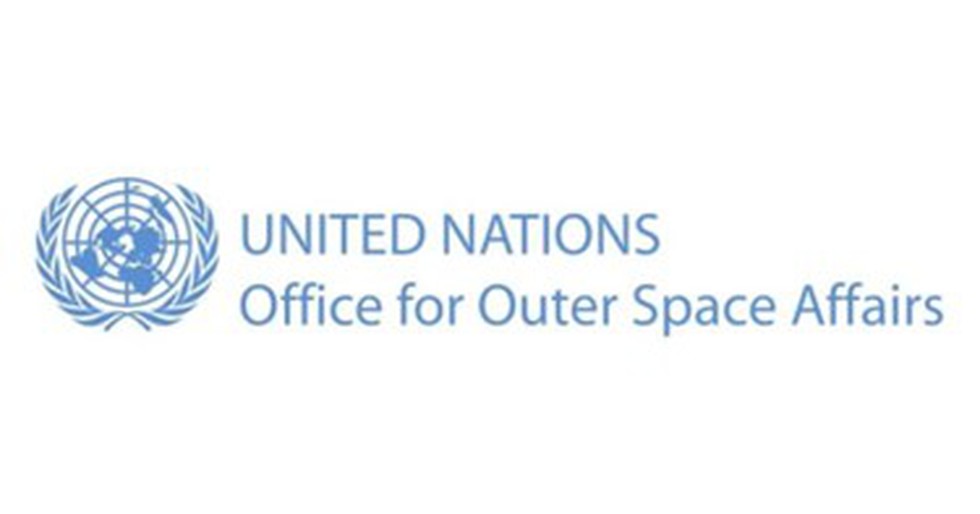
About the United Nations Office for Outer Space Affairs (UNOOSA):
- It is the UN office responsible for promoting international cooperation in the peaceful uses of outer space.
- It forms part of the United Nations Office at Vienna and serves as the Secretariat for the UN General Assembly's only committee dealing exclusively with those issues: the Committee on the Peaceful Uses of Outer Space.
- Functions:
- UNOOSA implements the United Nations Programme on Space Applications (PSA). Under the Programme, UNOOSA conducts training courses, workshops, seminars and other activities on space applications.
- On behalf of the UN Secretary-General, UNOOSA maintains the Register of Objects Launched into Outer Space and disseminates via its website that information recorded in the Register.
- It also prepares and distributes documents, reports, studies and publications on various aspects of space science and technology applications and international space law.
- It works to improve the use of space science and technology for the economic and social development of all countries, particularly developing countries.
Prelims Pointers
June 27, 2023

About the Digital Publisher Content Grievances Council (DPCGC):
- It is an independent self-regulatory body for Online Curated Content (OCC) providers.
- It was set up under the aegis of Internet and Mobile Association of India (IAMAI).
- DPCGC has been recognised and registered by the Ministry of Information & Broadcasting as Level II Self-Regulatory Body for publishers of OCC providers, under Information Technology (Intermediary Guidelines and Digital Media Ethics Code) Rules, 2021.
- The DPCGC has an Online Curated Content Publishers (OCCP) Council composed of publishers of OCC as members and an independent Grievance Redressal Board [GRB] consisting of a chairperson and six members.
- The GRB will be chaired by a retired Supreme Court/High Court judge, and the members will comprise eminent persons from the media and entertainment industry and experts from various fields, including child rights, minority rights, and media law.
- Functions of GRB:
- It will oversee and ensure the alignment and adherence to the Code of Ethics by the OCCP Council members.
- Provide guidance to entities on the Code of Ethics.
- Address grievances that have not been resolved by the publisher within 15 days.
- Hear grievances/appeals filed by complainants.
- DPCGC, through the GRB aims to usher in a redressal mechanism which will ensure a balance between addressing viewer complaints and showcasing content in free-speech environment without ad-hoc interventions
What is Online Curated Content (OCC) Platforms?
- OCC Platforms are companies that carry on the business which curates and presents a wide variety of content by means of online video-on-demand platforms.
- Amazon Prime, Netflix, Hotstar, Zee5, etc, are examples of OOC Platforms operating in India.
- These platforms operate on the basis of a “pull model”, whereby customers have the choice of viewing content as per their own convenience.
Prelims Pointers
June 27, 2023
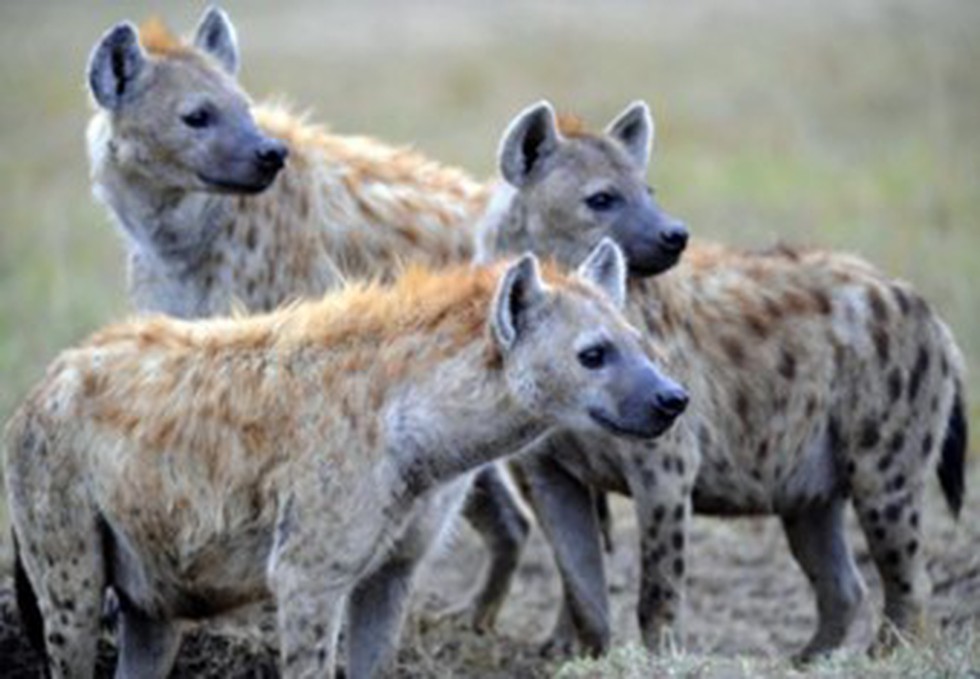
About Hyenas:
- Hyenas are doglike carnivores found in Asia and Africa and are noted for their scavenging habits.
- Family: Hyaenidae
- There are three hyena species — spotted (Crocuta Crocuta), brown (Arahyaena brunnea), and striped (Hyaena hyaena). Spotted hyenas are the largest of the three.
- Habitat: Forest edges, grasslands, savannas, sub-deserts, and even mountains at an elevation of about 13,000 feet.
- Distribution: These animals live throughout Africa, the Middle East, and parts of Asia.
- Features:
- They are four-legged animals with scraggly fur and large ears.
- They have long forelegs and a powerful neck and shoulders for dismembering and carrying prey.
- They are tireless trotters with excellent sight, hearing, and smell for locating carrion, and they are proficient hunters as well.
- All hyenas are more or less nocturnal.
- These animals usually live for about 12 years, but they can live up to 25 years. Brown hyenas, however, typically have shorter lives.
- Conservation Status: According to IUCN, Spotted Hyena populations are of least concern. However, brown and striped hyenas are classified as near threatened.
Prelims Pointers
June 27, 2023
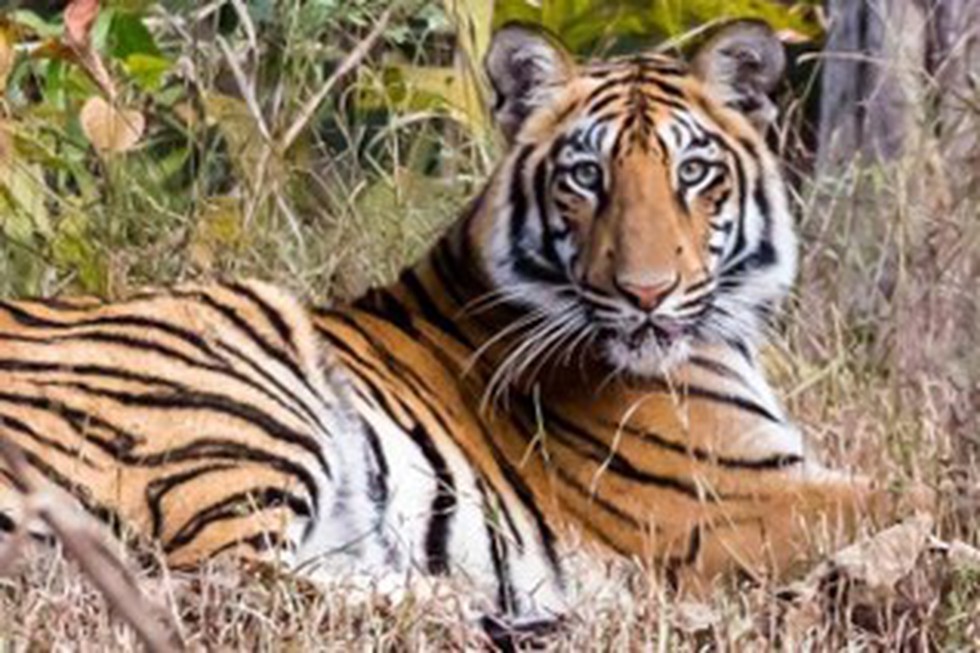
About Tadoba-Andhari Tiger Reserve:
- Location: It is located in the Chandrapur district of Maharashtra.
- The origin of the name "Tadoba" lies with the name of the God "Tadoba" or "Taru", worshiped by the tribes who live in the dense forests of the Tadoba and Andhari regions. While "Andhari" refers to the Andhari River that meanders through the forest.
- The total area of the reserve is 625.4 square kilometers. This includes Tadoba National Park, covering 116.55 sq. KM, and Andhari Wildlife Sanctuary of 508.85 sq. KM.
- Corridor: The reserve has corridor linkages with Nagzira-Navegaon and Pench Tiger Reserves within the State.
- Habitat: Biogeographically, the reserve falls in the Central Plateau Province of the Deccan Peninsula, with tropical dry deciduous forests and a typical Central Indian faunal assemblage.
- Flora:
- Teak is the dominant tree species.
- Other major tree species include Ain, Bamboo, Bija, Dhaoda, Haldu, Salai, Semal and Tendu.
- Along the moist areas, species like Mango, Jamun and Arjun are found.
- Fauna:
- The notable faunal species include tiger, leopard, sloth bear, wild dog, gaur, chital, and sambar.
- As many as 280 species of birds are found, apart from reptiles (54 species), amphibians (11 species) and fishes (84 species).
Prelims Pointers
June 27, 2023
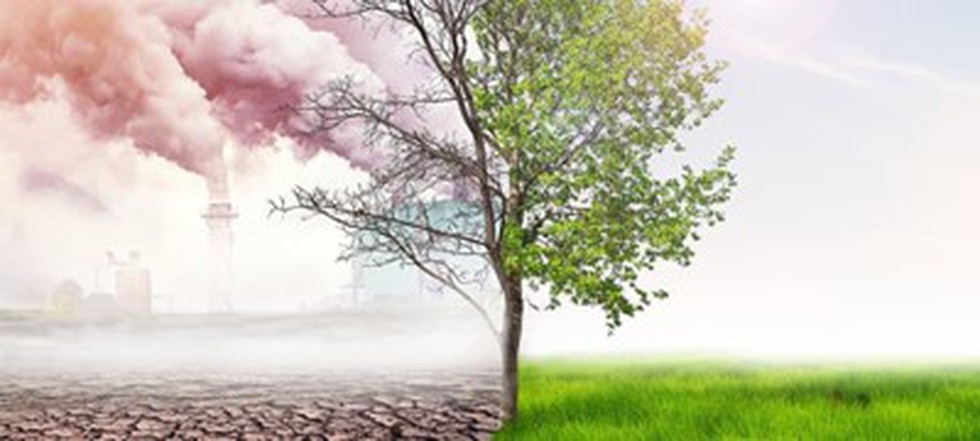
About Greenwashing:
- What is it? It is the process of conveying a false impression or misleading information about how a company’s products are environmentally sound.
- Greenwashing involves making an unsubstantiated claim to deceive consumers into believing that a company’s products are environmentally friendly or have a greater positive environmental impact than they actually do.
- In addition, greenwashing may occur when a company attempts to emphasize sustainable aspects of a product to overshadow its involvement in environmentally damaging practices.
- Companies can also greenwash initiatives with vague claims that don't provide real data or scientific validation for the claims.
- For example, a car vendor claims that a vehicle is eco-friendly because it is more fuel-efficient, while failing to mention or consider the larger industrial impact of vehicle manufacturing on the environment.
What is the International Sustainability Standards Board (ISSB)?
- It was created in 2021-22 to develop a worldwide standard for sustainability reporting.
- It is part of the independent International Financial Reporting Standards (IFRS) foundation, which also writes accounting rules used in more than 100 countries.
- The mission of the ISSB is to develop—in the public interest—a comprehensive global baseline of high-quality sustainability disclosure standards to meet investors’ information needs.

